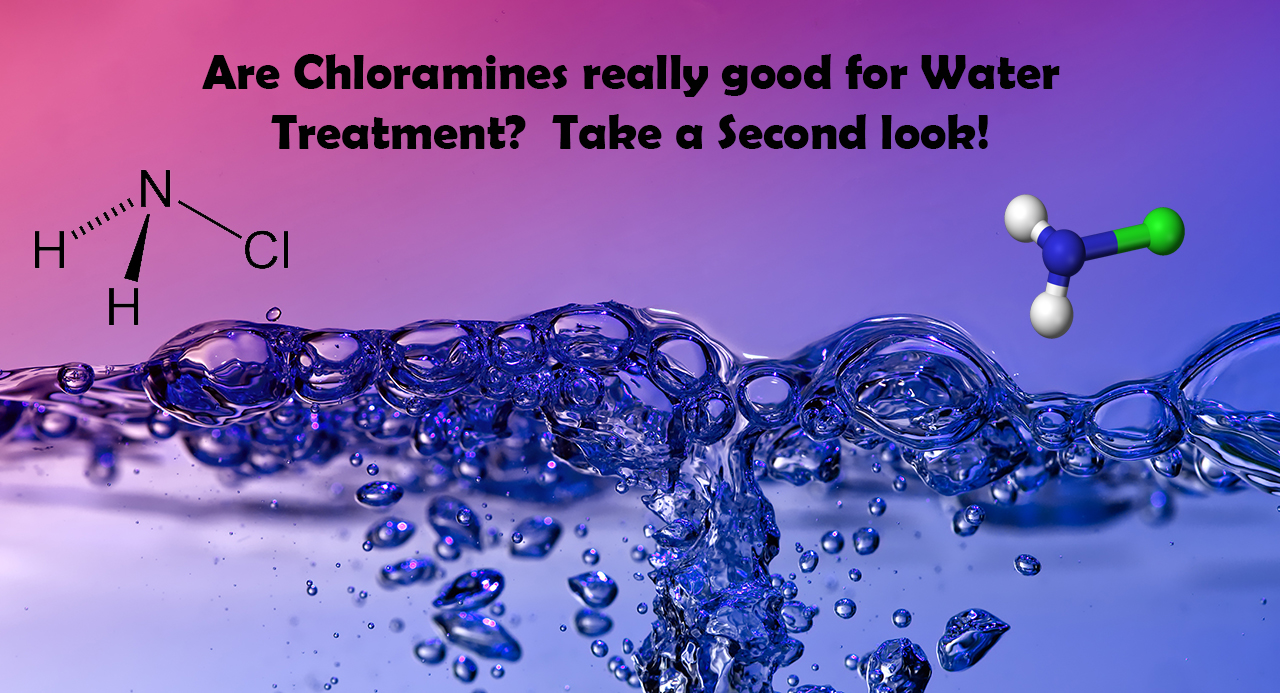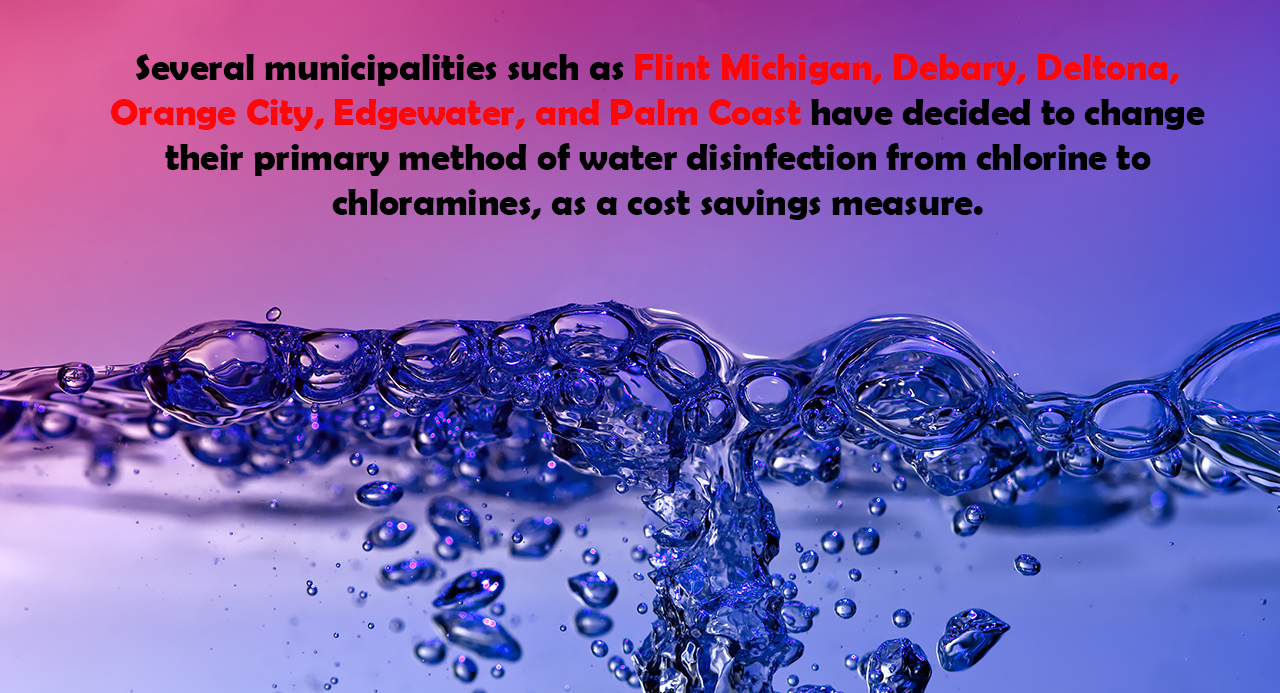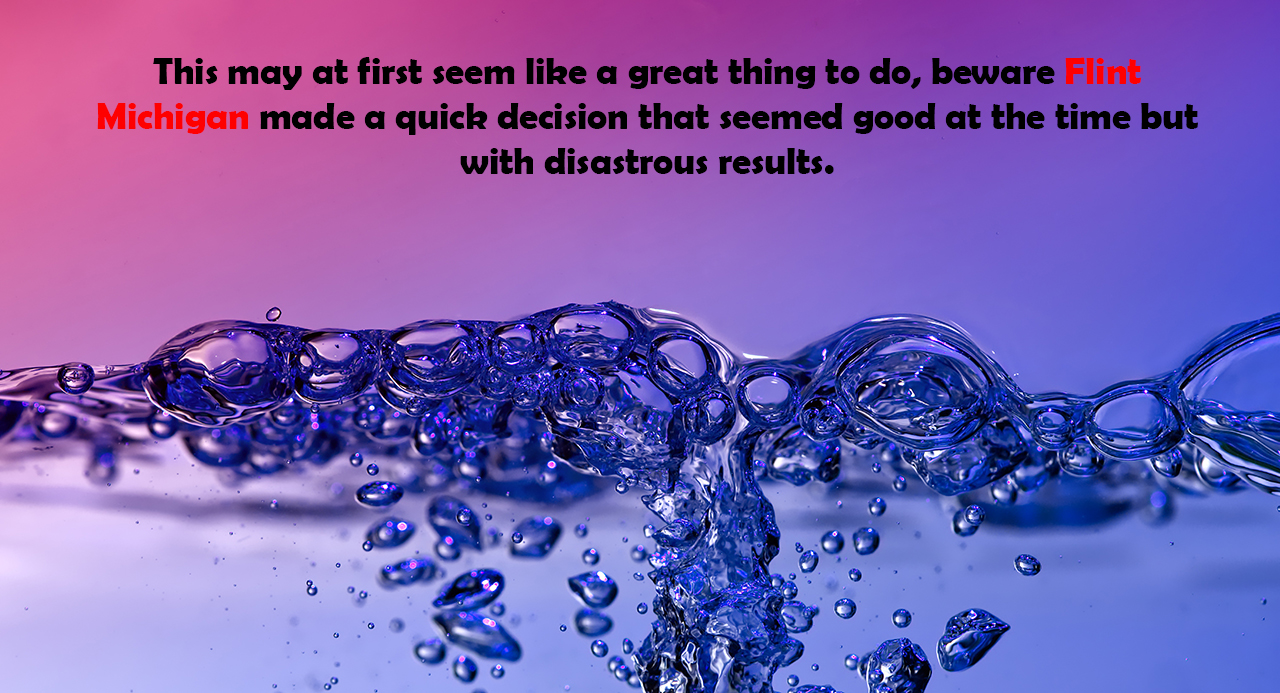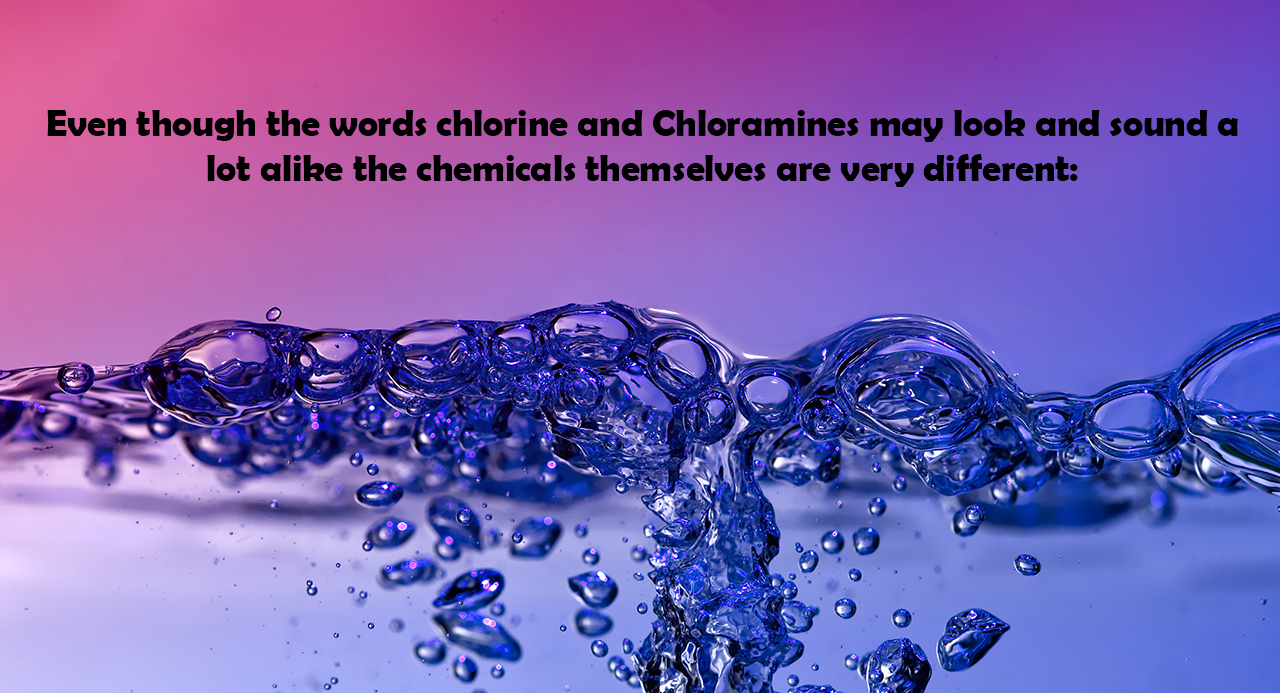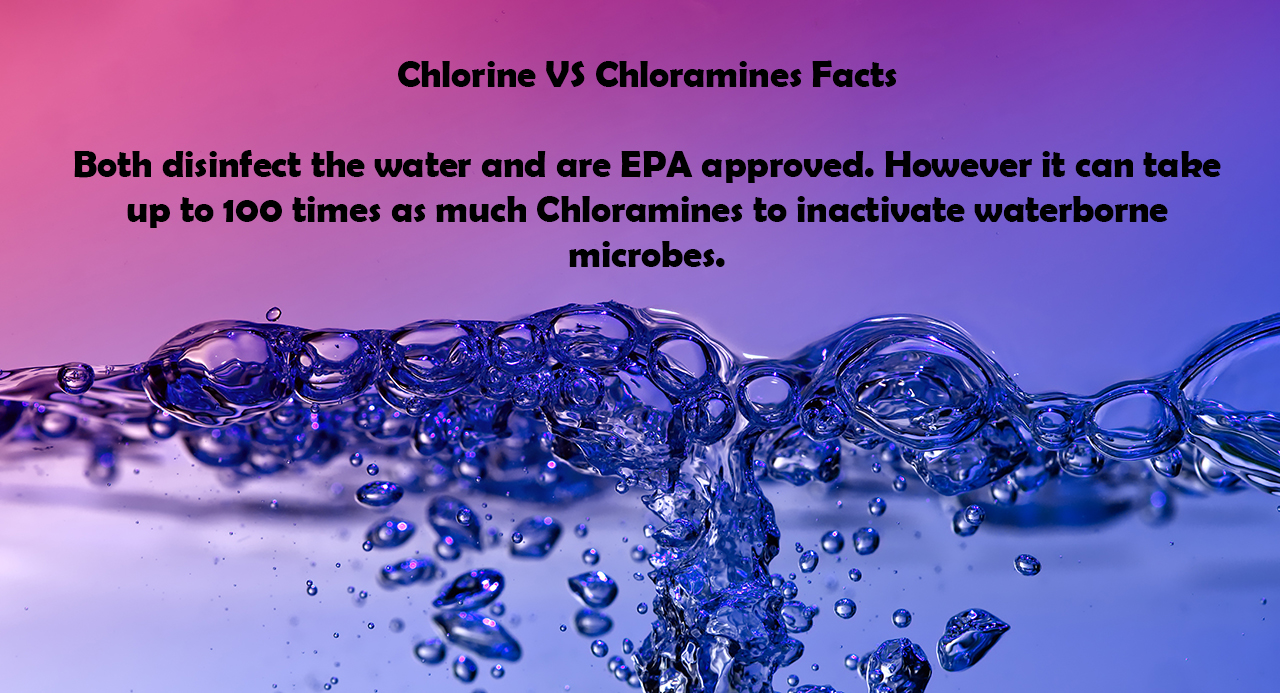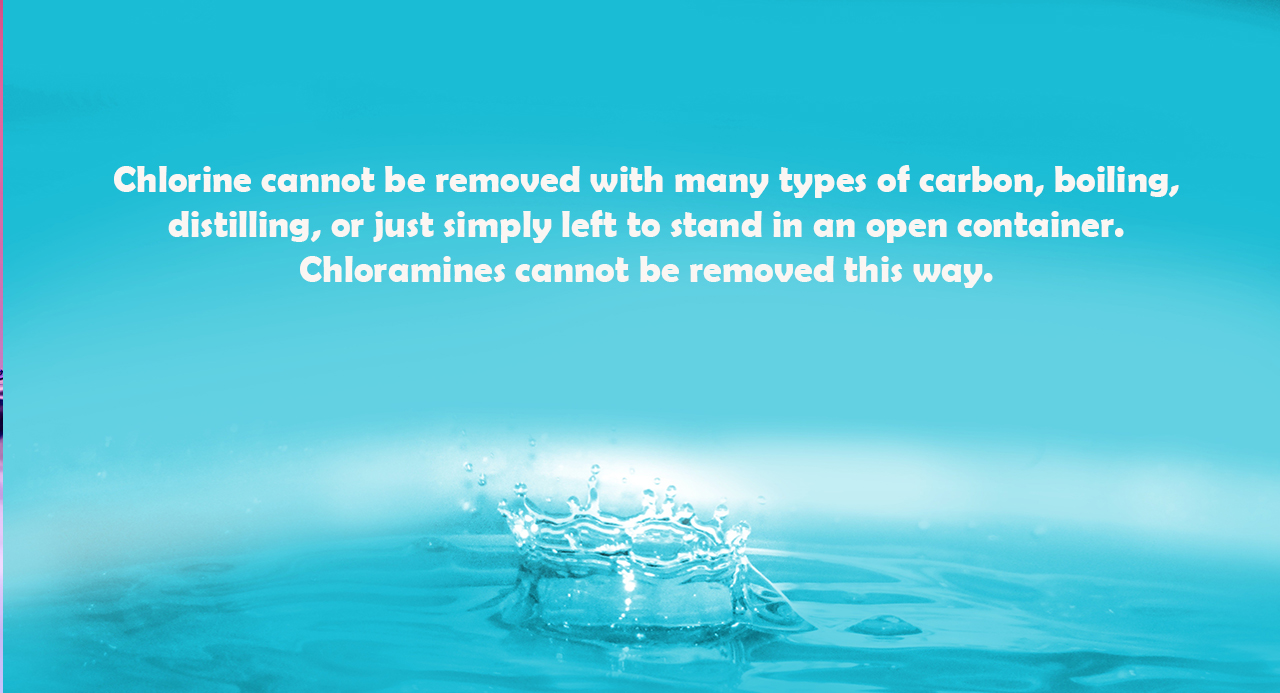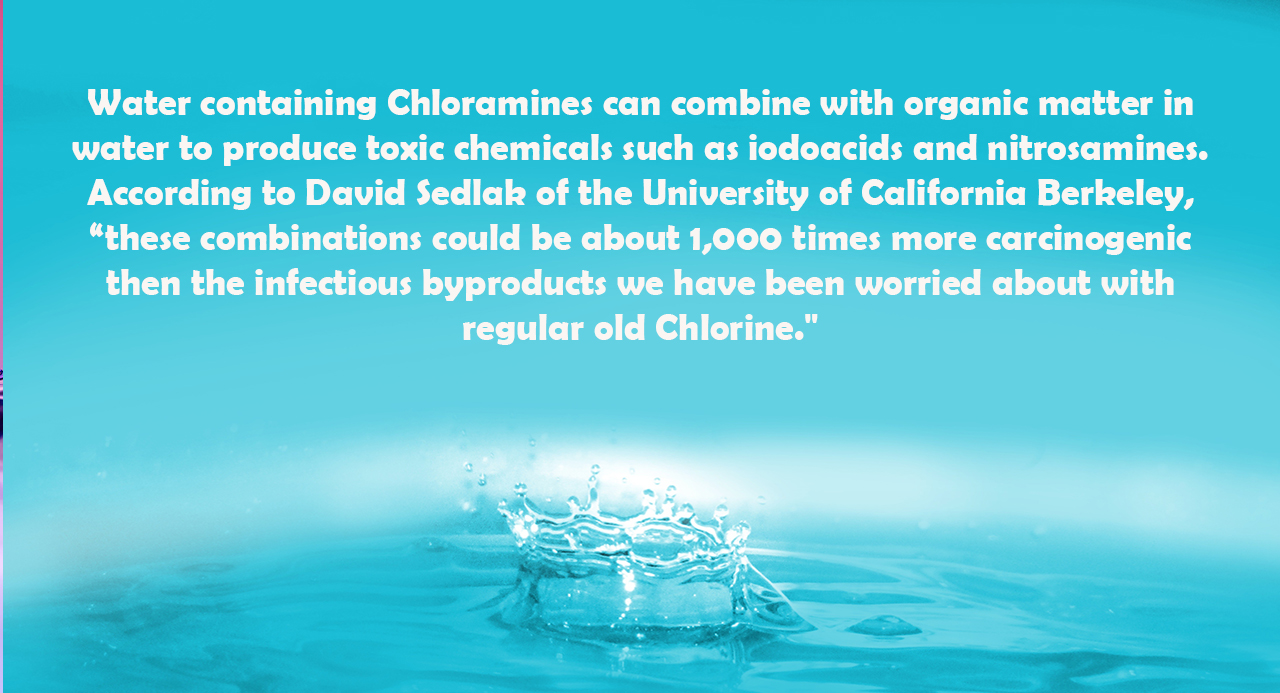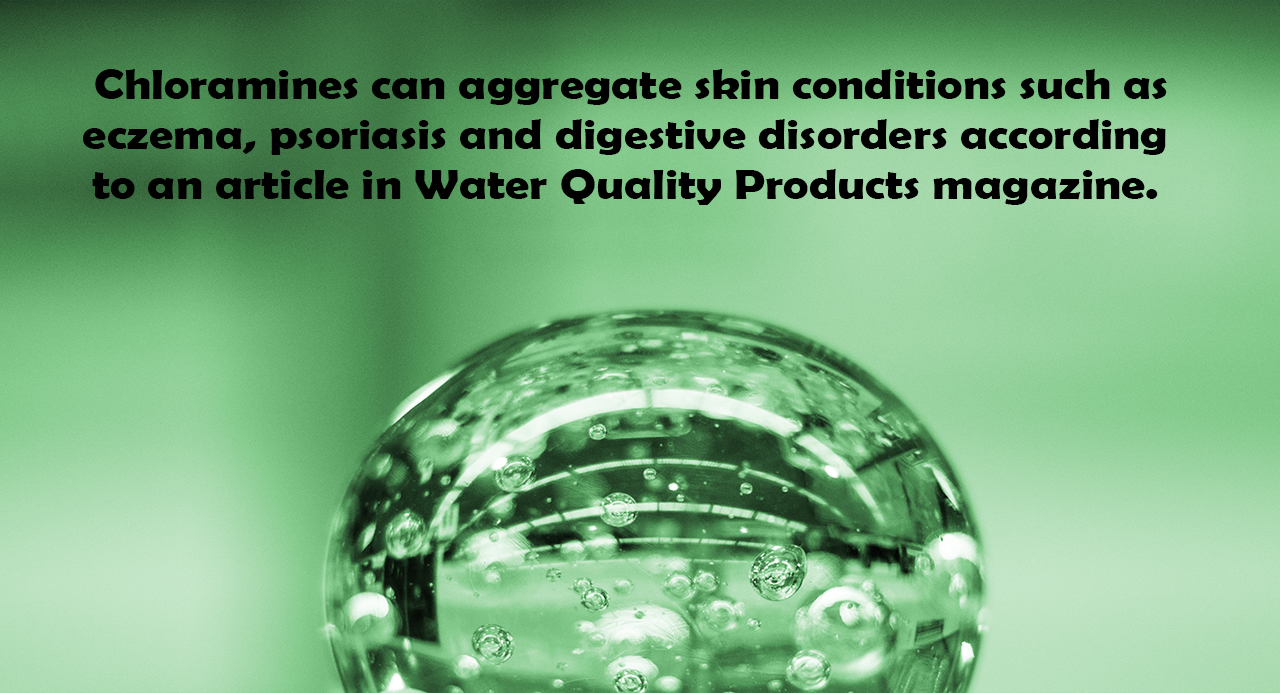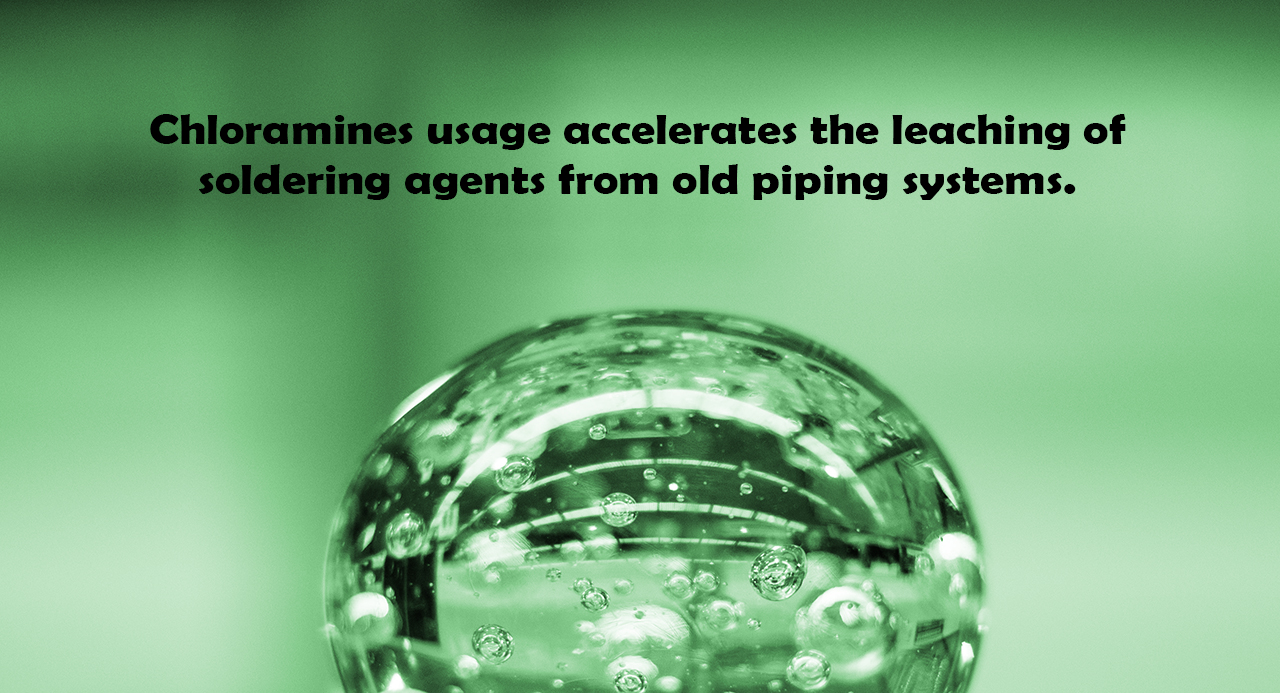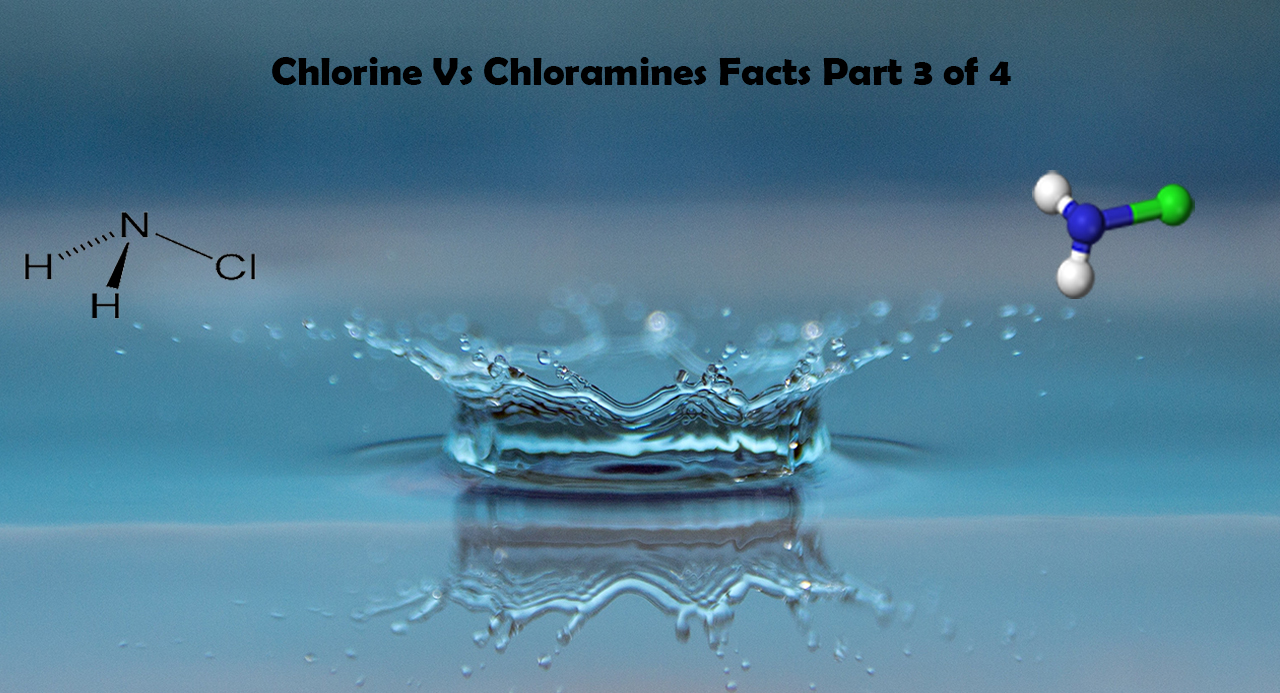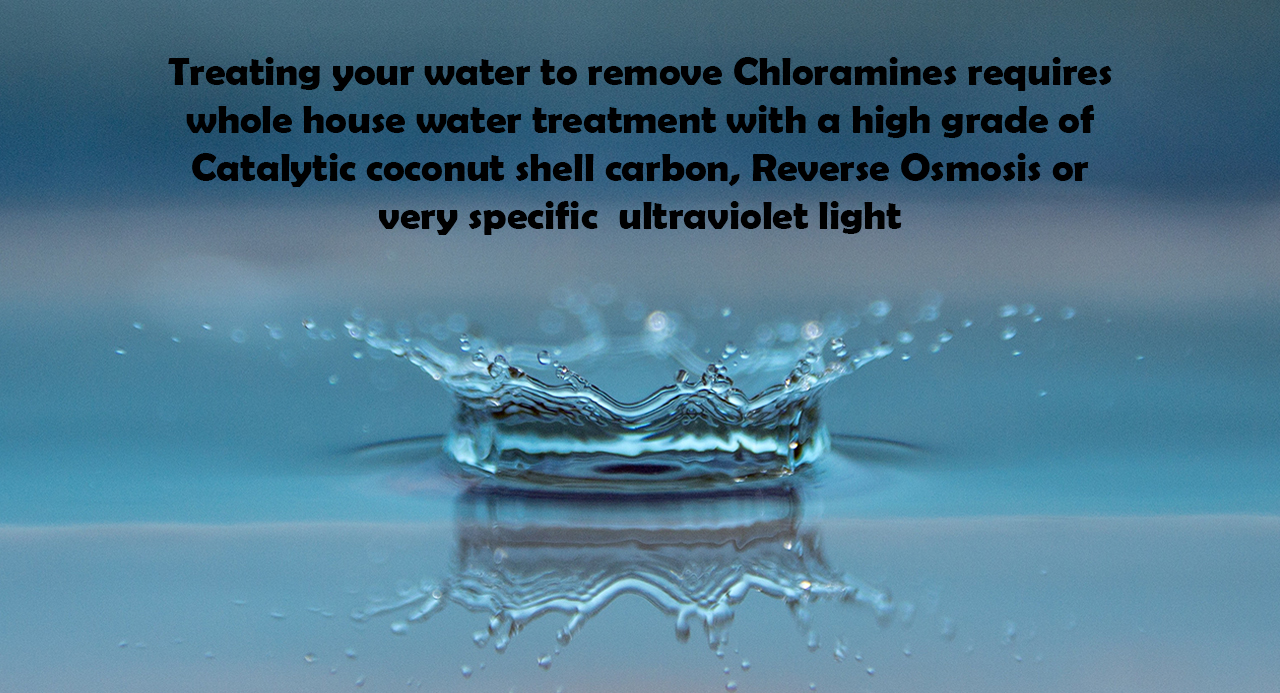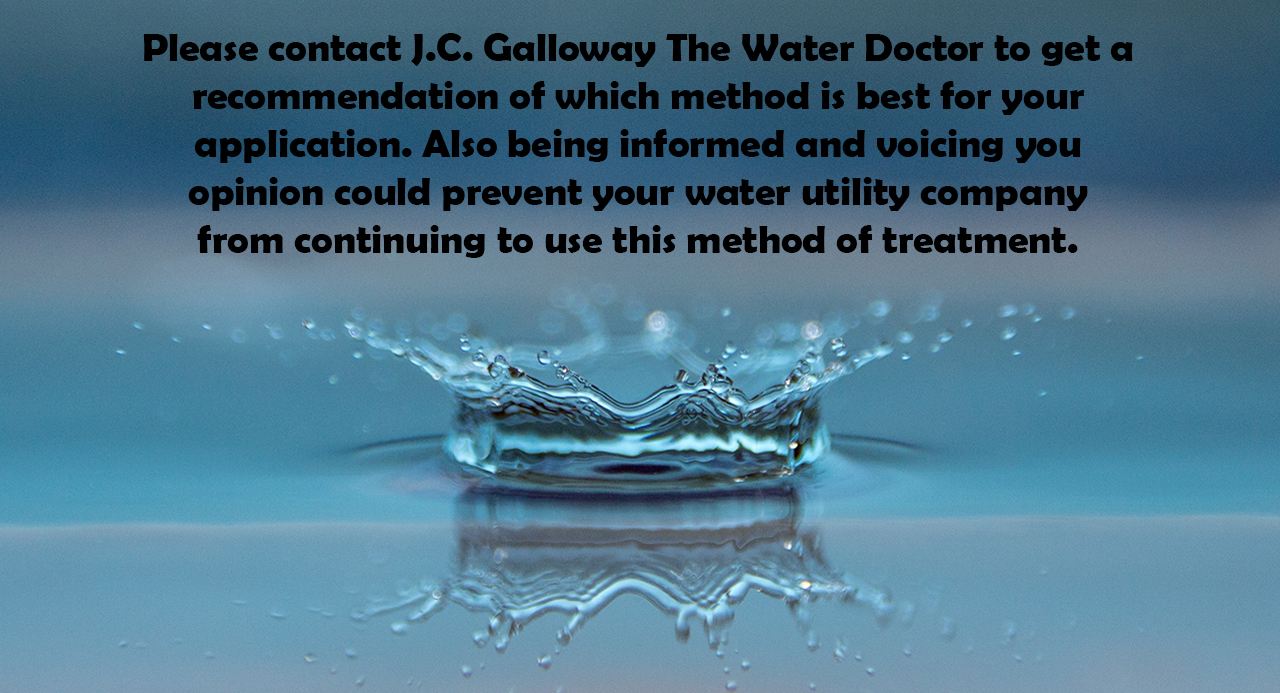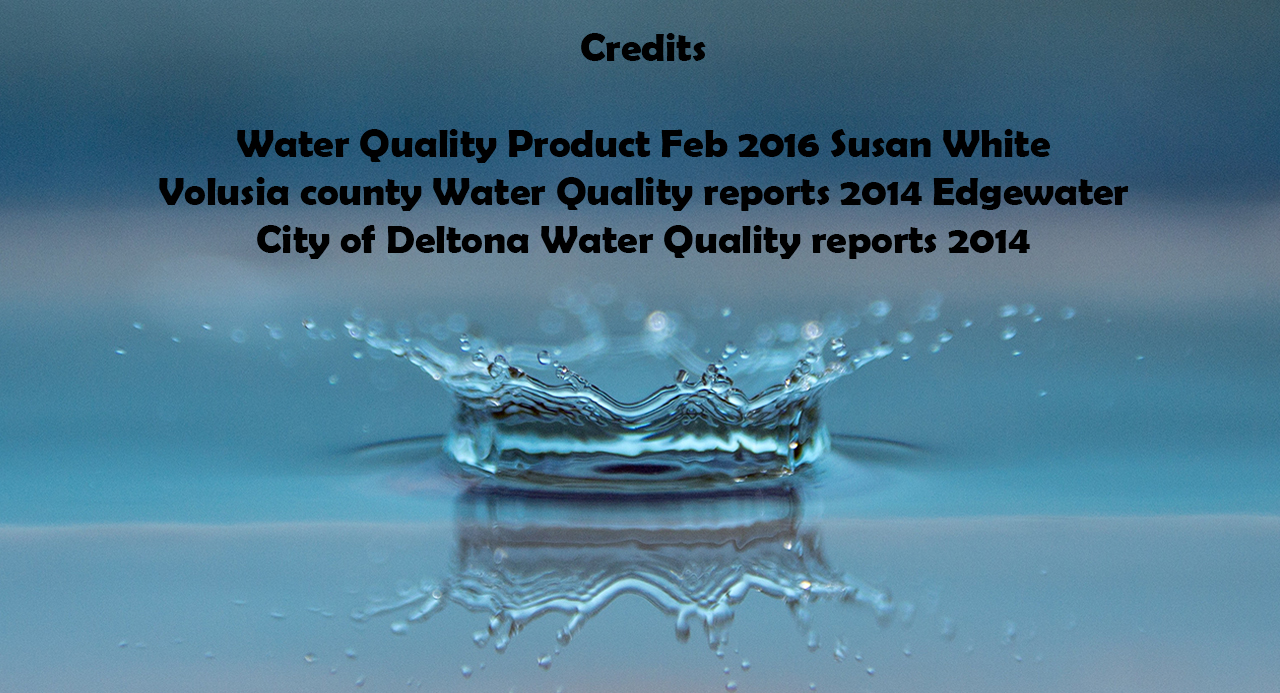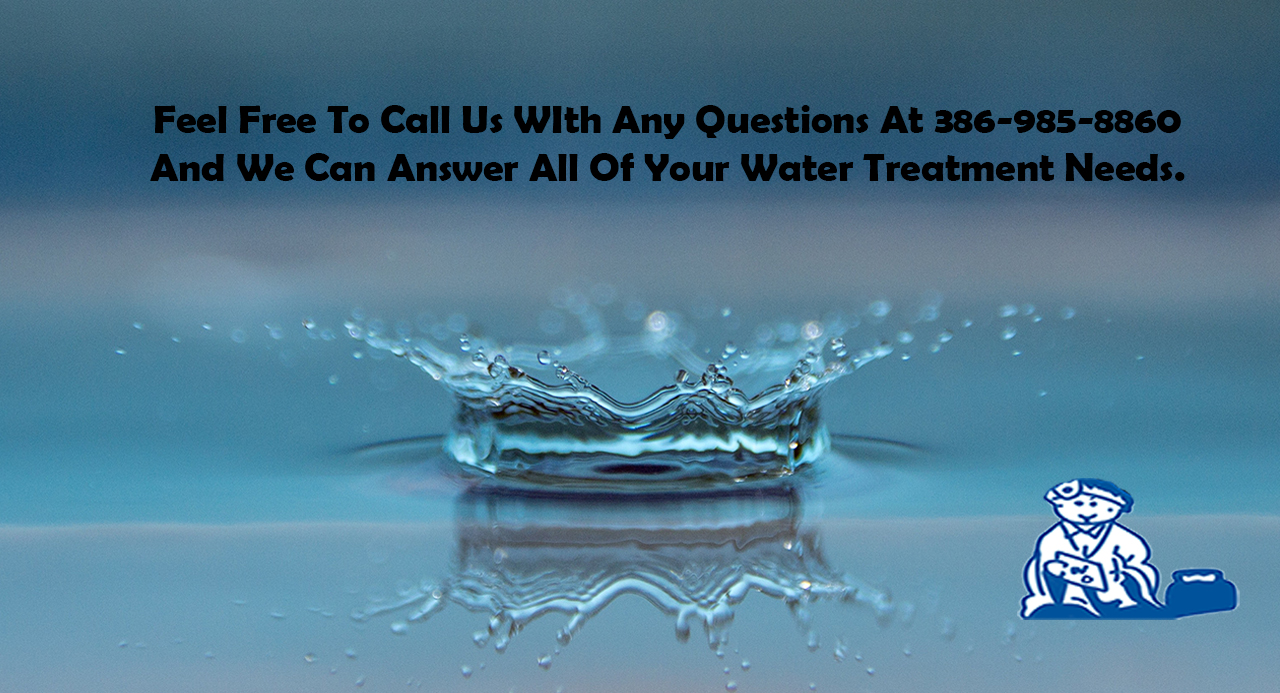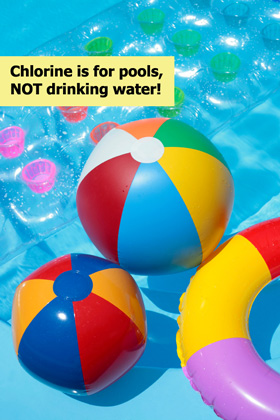
Issue:
Chlorine is added as part of the drinking water treatment process, as a disinfectant to reduce or eliminate microorganisms. Drinking water supplies have been greatly improved by the addition of chlorine.
Disinfecting our drinking water ensures it is free of bacteria and viruses that can cause serious and life-threatening diseases, such as cholera and typhoid fever. Chlorine remains the most commonly used drinking water disinfectant, and the disinfectant for which we have the most scientific information.
Symptom: “My water tastes like I’m drinking from a swimming pool”
Along with a taste and odor that many find offensive, chlorine also reacts with organic matter in water. This chemical reaction forms a group of chemicals known as chlorination by-products. The most common of these by-products are trihalomethanes (THMs). The amount of THMs found in drinking water depends on a number of factors, including the season and the source of the water.
Several studies have found a link between long-term exposure to high levels of chlorination by-products and a higher risk of human cancer. For instance, a recent study showed an increased risk of bladder and possibly colon cancer in people who drank chlorinated water for 35 years or more.
High levels of THMs may also have an effect on pregnancy. A California study found that pregnant women who drank large amounts of tap water with high THMs had an increased risk of miscarriage. These studies do not prove that there is a link between THMs and cancer or miscarriage. However, they do show the need for further research in this area to confirm potential health effects.
Are Chloramines really good for Water Treatment? Take a Second look!
Several municipalities have decided or are deciding to change their primary method of water disinfection from chlorine to Chloramines, as a cost savings measure. This may at first seem like a great thing to do, beware Flint Michigan made a quick decision that seemed good at the time but with disastrous results.
Even though the words chlorine and Chloramines may look and sound a lot alike the chemicals themselves are very different:
1) Both disinfect the water and are EPA approved. However it can take up to 100 times as much Chloramines to inactivate waterborne microbes.
2) Chlorine can be removed with many types of carbon, boiling, distilling, or just simply left to stand-in an open container. Chloramines cannot be removed this way.
3) Water containing Chloramines can combine with organic matter in water to produce toxic chemicals such as iodoacids and nitrosamines. According to David Sedlak of the University of California Berkeley, “these combinations could be about 1,000 times more carcinogenic then the infectious byproducts we have been worried about with regular old Chlorine.”
4) Chloramines can aggregate skin conditions such as eczema, psoriasis and digestive disorders according to an article in Water Quality Products magazine.
5) Chloramine usage accelerates the leaching of soldering agents from old piping systems.
Treating your water to remove Chloramines requires whole house water treatment with a high grade of Catalytic coconut shell carbon, Reverse Osmosis or very specific ultraviolet light. Please contact J.C. Galloway The Water Doctor to get a recommendation of which method is best for your application. Also being informed and voicing you opinion could prevent your water utility company from considering this method of treatment.
Credits Water Quality Product Feb 2016 Susan White
Volusia county Water Quality reports 2014 Edgewater
City of Deltona Water Quality reports 2014p>
We do water right
Once chlorine or chloramine have done their job in suppressing virus and bacteria growth, treat chlorine taste and odor with the twin or single tank system. Both Systems not only filters dirt and sediment from your water; it also softens your water and reduces aesthetic chlorine to a nominal amount. One of the reasons the twin tank system is far superior to other systems is that our smallest system has 3 times as much carbon as some of the others and to give it long life it is also is back-washed along with the softener.
It is important to note that everyone’s water supply can be different. Contact us for a complete analysis of your water supply. This allows us to customize your water treatment system to your specific needs.
We now offer well systems using Hydrogen Peroxide instead of chlorine or bleach. The results are outstanding with:
-
LESS maintenance to the system,
-
LONGER useful life on the carbon,
-
and CLEANER and SAFER WATER.
Current chlorination systems can be converted to Hydrogen peroxide. The cost for this conversion in most cases in minimal.
JC Galloway & Son – The Water Doctor is your premier water purification and water softener service in
Apopka, Altamonte Springs, Astatula, Bay Lake, Belle Isle, Beverly Beach, Bostwick, Bunnell, Casselberry, Clermont, Crescent City, Daytona Beach, Daytona Beach shores, Daytona North, DeBary,
DeLand, Deltona, Eatonville, East Palatka, Edgar, Edgewater, Edgewood, Eustis, Flagler Beach, Fruitland Park, Florahome, Georgetown, Grandin, Groveland, Heathrow, Holliste, Holly Hill, Howey In The Hills, Interlachen, Lady Lake, Lake Buena Vista, Lake Como, Lake Mary, Leesburg, Longwood, Maitland, Marineland, Melrose, Mondikes, Oakland, Ocoee, Orange City, Orlando, Ormond Beach, Osteen, Ovido, Palatka, Palm Coast, Pierson, Pomona Park, Putman County, Putman Hall, Sanford, San Mateo, Satuma, Seminole County, Tavares, Umatilla, Welaka, Winter Springs, and the rest of Volusia County in Florida. We also serve neighboring Flagler County, Brevard County, Orange County, Seminole County, and Lake County including the areas of Paisley & Sanford. If you are in the area surrounding Deltona & DeLand, Fl, we have you covered!

